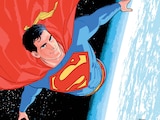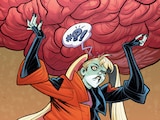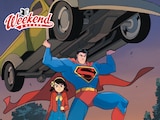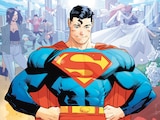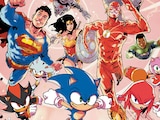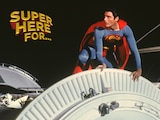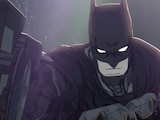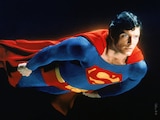“Comics are for everyone.”
This is a credo that we at DC hold very dear, and one we strive to keep in mind with everything we publish. And it’s an easy principle to stick to because history and the world around us have proven it demonstrably true. Every culture throughout the world engages in the storytelling medium of sequential art in their own way, with their own unique modes of expression. Wherever you go in the world, you’ll find comics. Those comics may look and feel different than the ones you may be familiar with, but each of these international traditions represent the boundless potential of what comics can do.
With Batman: The World, DC is bringing that idea to the public like never before, uniting artists from fourteen different nations to deliver their perspective on the world’s most popular superhero, Batman. Over the next few days at DCComics.com, we’re providing a companion guide to the different countries you’ll see represented in this anthology: their history with comics, their contributions to DC in particular, and a little bit of background on the creators you’ll see showcased in this new graphic novel. We hope you’re prepared to travel because it’s a beautiful day to see the world.

The United States of America
Our journey begins with a taste of home: the birthplace of DC Comics and the nation which gave the “Justice League of America” its name. Pioneers of the comic book industry as we know it such as Jerry Siegel, Bob Kane and Bill Finger, Jack Kirby, Joe Simon, Steve Ditko and Stan Lee all started in the American comics scene which emerged alongside the thinly bound magazine form that DC still utilizes in the 1930s.
Like so many products of the 20th century American industrial boom, perhaps what defines American comics is the assembly line approach to production. Under the major publishing houses, each stage of production often calls for its own dedicated specialist: a writer, a penciler, an inker, a colorist, a letterer and an editor to ensure that the baton relay all goes smoothly. The United States is where the “superhero” genre was born. And nearly a century after it began, superhero stories which were first defined in the comics have established a dominant presence in every form of media. And it all started here, with four colors and twenty pages.
Representing the “home team” as it were in Batman: The World is the boundary-pushing creative duo of Brian Azzarello and Lee Bermejo, whose work together on titles such as 2008’s Joker and the Black Label launch series Batman: Damned has consistently moved the needle on how we perceive Batman and his world. And as the framers of this ambitious anthology, they’re an ideal team to bring the Dark Knight global.

France
One half of the Bandes dessinées scene, some of the talent France has brought to the DC Universe includes You Brought Me the Ocean artist Jul Maroh, the Superman: Metropolis Elseworlds trilogy author Jean-Marc L’officier, DC Comics Bombshells artist Marguerite Sauvage, Injustice: Gods Among Us inker Julien Hugonnard-Bert, and co-creator of the timeless Vertigo series The Sandman, Mike Dringenberg.
Some of the greatest and most widely known all-ages comics have emerged through the adventure and history-driven culture around the Franco-Belgian comic pipeline, a duality of French-published comics which have captured the imaginations of children for generations. The Adventures of Tintin, The Smurfs, Asterix & Obelix and Lucky Luke are all products of French comics culture, legendary titles which continuously grow over decades under the auspices of a single creator or creative team. Bandes dessinées, or “drawn strips,” first found popularity within French speaking territories in the 1960s, and typically emphasize exploration and discovery of the unknown balanced with visual humor, as opposed to the more American-centric battle of good versus evil.
Representing France in Batman: The World is Thierry Martin, a French-Lebanese artist who gained notoriety through his serialized work Dernier Souffle, a daily black-and-white Western comic strip on Instagram. He is joined by writer Matthieu Gabella, perhaps best known for his biographical work on important historical figures such as Charles de Gaulle and graphic novel adaptations of great literary works such as Jules Verne’s The Mysterious Island. Here, he’ll be taking on a different kind of literary icon.

Spain
The tebeos culture of Spain has been very, very kind to DC, granting us some of the finest artists of the current era. Name your top five working DC artists and odds are good that at least two of them emerged from the Spanish scene. Batman’s Jorge Jiménez, Nightwing’s Bruno Redondo, Action Comics’ Mikel Janín, The Joker's Guillem March—even going back to José Luis García-López in the Bronze Age, who codified the entire look and feel of the DC Universe with his internal style guide, Spanish artists have stood among the leaders in DC’s bullpen for decades.
Though visual storytelling through art dates back to medieval Spain, comics as we know them were largely banned through most of the 20th century as a product of the Spanish Civil War in 1940. To find an audience under a highly audited culture, what comics did exist in Spain emphasized historical fiction such as typified by the medieval Capitán Trueno, or “Captain Thunder.” The fall of Generalissimo Franco in 1975 loosened the cultural restrictions, allowing for a new wave of more mature, often horror-themed comics like Vampus and Dossier Negro, and even the occasional absurdist superhero title such as Superlópez. Making up for lost time in the art form, the Spanish Ministry of Culture has been making efforts to encourage the production of Spanish comics since 2007—but like many territories, the most successful Spanish comics on the scene today are typically web-based.
Representing Spain in Batman: The World is writer/artist Paco Roca, creator of the comic book Arrugas (or, Wrinkles) which was adapted into a major motion picture in 2011. His work is heavily engrossed in the culture of Spain, which perfectly suits him as an ambassador for Spanish comics to Batman readers.

Italy
Italian comics, or fumetti, are best known for incorporating photography into their work as opposed to hand-drawn art, but that doesn’t mean the culture hasn’t produced some fine comic artists, as well. Starfire, Supergirl and Wonder Woman artist Emanuela Lupacchino, Vertigo-era Swamp Thing and Hellblazer artist Giuseppe Camuncoli, Joker: Killer Smile’s Andrea Sorrentino, and even Doom Patrol and Teen Titans co-creator Bruno Premiani all hail from Italy. So did Vince Coletta for that matter, inker and frequent partner to Jack Kirby who called the shots at DC as lead art director through the late 1970s.
Comic magazines in Italy are an even older tradition than they are in the United States, debuting on newsstands as early as 1908. Aimed mainly at children, early fumetti featured parodical takes on subjects such as math and language, which any schoolkid could relate to. For a while, fumetti magazines featured Italian translations of popular American strips, but the rise of the Fascist movement in Italy banned most foreign works from pervading their culture as comics were enlisted as a tool for propaganda. Seething with political purpose, the Italian comics counterculture developed around lambasting the Fascist government and its figureheads. The postwar rise of the “spaghetti Western” genre also left a trail of original Italian Western comics in its wake, like Cocco Bill and Tex Willer. But as a politically charged medium within Italian culture, comics in Italy were primed for the underground “comix” boom of the 1970s, which has continued to inform the direction of Italian comic features to this day. That and the rise of a certain cartoon mouse known locally as “Topolino” who had managed to maintain a significant presence in Italy throughout the 20th century even in the Mussolini years. (Out here, we call him “Mickey.”)
Representing Italy in Batman: The World is—and trust us, this is no exaggeration—the dream team of writer Alessandro Bilotta and artist Nicola Mari. The duo is best known for their work on the international smash hit and long serialized Italian dark fantasy series Dylan Dog, whose title character is a paranormal investigator and social critic of sorts whose closest DC analogue is perhaps John Constantine. Hmm… Now there’s a crossover waiting to happen.

Germany
The original German comic market isn’t quite as large as those of other major European cultural hubs, accounting for only a small percentage of the nation’s printed material. Translations of American and Franco-Belgian comics are far more prominent in Germanic territories. Nevertheless, Germany has produced a number of incredible talents for DC, such as Silver Age Superman artist Kurt Schaffenberger, Golden Age artist Otto Feuer who helped define DC’s own “Funny Animal” period, Paul Reinman, who drew many of the earliest escapades of Wonder Woman, Wildcat and Starman, and Tajana Wood, the prolific and talented colorist through DC’s Silver and Bronze Age periods who defined DC’s broad palette. (You can see some of her greatest work on display in the Animal Man and original Swamp Thing comics.)
It was difficult for the comics boom to find a foothold in 20th century Germany, due to a blanket ban on the art form by Nazi enforcers. After the fall of the Nazi regime, “Funny Animal” comics of anthropomorphic woodland creatures getting into human misadventures became popular in the country, such as Fix und Foxi. Detective strips like Nick Knatterton also began to appear in German newspapers. But apart from political cartoons, comics remained the exclusive domain of German children until the 1980s. That’s when the countercultural indie movement began to breach German cultural boundaries, and magazines such as Moga Mobo and Switzerland’s Strapazin began to dictate the terms of the mature comics movement, such as it was, within Germany. Worthy of note in particular is Comicforum, a German platform for discussing comics that launched at the turn of the 21st century and has done much of the heavy lifting to bring Germany into the global comics culture today.
Representing Germany in Batman: The World is writer Benjamin von Eckartsburg and artist Thomas von Kummant, the creative team behind 2019’s inventive post-apocalyptic graphic novel GUNG-HO.
As you read through Batman: The World, we hope you’ll take a moment to consider not only the talent of these remarkable creative teams, but also the diverse cultures that have contributed to each of their perspectives. And we’re not even close to finished. Please join us tomorrow when we continue our tour through Europe and Central Asia, and then finally shed light on our teams from Latin America and East Asia. The World awaits us!
Batman: The World is now available in bookstores, comic shops, libraries and on DC UNIVERSE INFINITE. Pick up a free chapter at your favorite comic book store or digital retailer on Batman Day this weekend!
Alex Jaffe is the author of our monthly "Ask the Question" column and writes about TV, movies, comics and superhero history for DCComics.com. Follow him on Twitter at @AlexJaffe and find him in the DC Community as HubCityQuestion.

